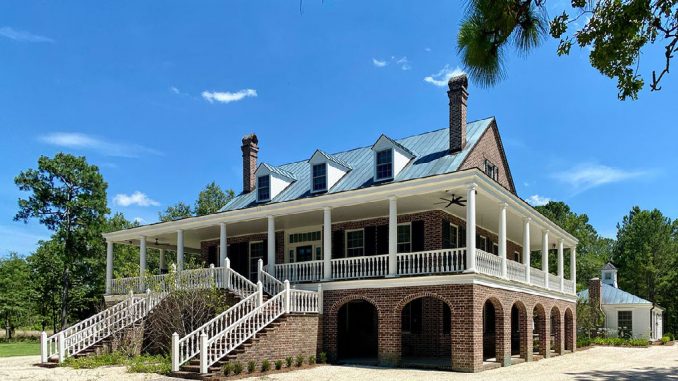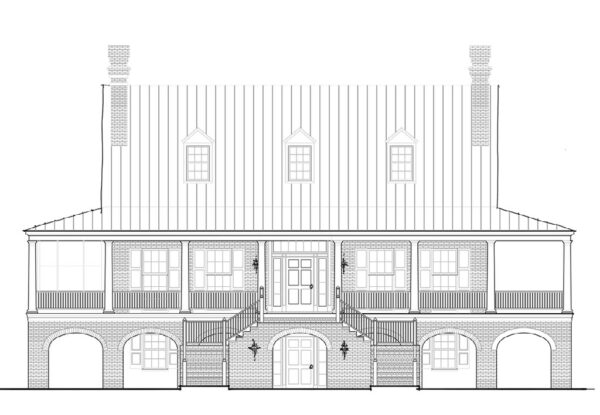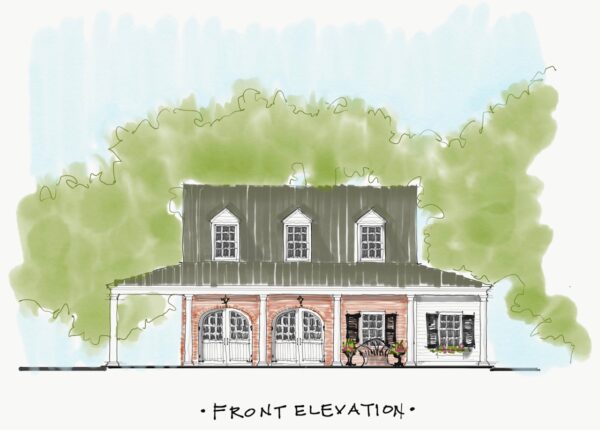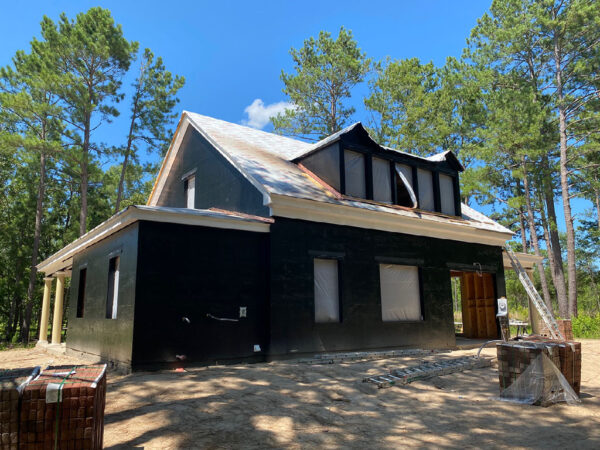
Classic touches of the Deep South are preserved—and updated—in this glorified hunting lodge with a touch of whimsy
Florida-based interior designer Andrew Howard may be known for his playful use of colors and patterns, as well as his fresh coastal looks, but that doesn’t mean he’s shied away from a project differing from his usual mores. In fact, he embraced the opportunity to reinterpret a Lowcountry hunting lodge in the Savannah River Preserve with gusto, guiding the evolution of the Hoover Plantation to better suit the new owners and their desire to host family, friends, and hunting buddies for getaways to this remote wooded retreat.
Sure, the home is a hunting lodge at heart—the surrounding land is a hunter’s paradise—but it’s also able to comfortably host nearly 20 people, with guest quarters and a separate guest cottage. The home is a classic example of Lowcountry elegance, an estate that exudes true South Carolina charm—appropriate for its location halfway between Savannah, Georgia and Beaufort, South Carolina.
Traditional elements of Lowcountry design were incorporated with the help of Florida-based Cronk Duch Architecture, including a raised first floor, due to the region’s high tides and annual hurricane threats; a wraparound porch shaded by a wide roof; hung windows for maximum ventilation; shutters, now used as a decorative accent rather than a protective measure against storms, as in the past; transom windows; and high ceilings—all of which are present in the Hoover Plantation home.

The overall goal of such design choices has a basis in history, with early British settlers bringing over their simple cottage designs, but having to adjust some architectural choices to better accommodate the hot, muggy weather of the Deep South. Homes in this slow-paced, low-elevation area were designed to be both simple and elegant, serving a functional purpose while declaring the residing family’s style and values.
“The house had great wainscoting and paneling,” said Howard. “The old heart pine floors were a must-keep. The triple-hung windows, especially in the living room, are not something you really see anymore and are great for Lowcountry vernacular.” The custom windows, done by Allen Patterson Builders, replaced the house’s original double-hung windows.
Such windows are most common in older buildings found in warmer climates, because they’re easy to clean and encourage air circulation throughout the home, helping to keep it cool. The windows were opened at the top to allow hot air to escape while drawing cool air in through the opening at the bottom. Triple-hung windows were for taller openings and high ceilings.
Similarly, the floors of the home also speak of history. Heart pine was long the building material of choice throughout the southeastern states, especially in the years leading up to the American Revolution and even into the early 1900s—it’s been called “the wood that built America.” Native to the region, heart pine was favored by settlers thanks to its sturdiness, pest resistance, durability, and clean, sophisticated look. It was also used for shipbuilding and to construct fine homes and hotels during the Victorian era.
Howard and the homeowners maintained the historic elements of the home, using a light touch to reimagine its design while meeting the needs and style of the new owners. “We didn’t change anything architecturally except redoing the master bath and kitchens,” Howard said. “Other than that, the details were great and we left them just how they were.”

Though this particular home was built in the 1980s, it was intended to reflect a classic Lowcountry look. The history of its surroundings goes further back; the home is located on a 2,500-acre property that formerly belonged to the Pineland Hunting Club, established in the 1890s for avid hunters and sportsmen. Today, the land is still teeming with birds and other woodland creatures—quail is a regular meal at the home.
The Hoover Plantation was purchased as a second home: a place to host groups for weekends in the woods shooting. While its elegant interior places it legions above typical hunting lodges, it’s still a great place for a hunting trip. “This house has a gun room where the hunters can get ready in the mornings,” Howard shared. “There’s also a large laundry room with a place to wash the dogs, as well as good and durable tile flooring because the boots get pretty nasty out on hunts.”
Adding to the Lowcountry look is a wraparound veranda and a split set of stairs known as “petticoat stairs”—a totally Southern feature. The history of this architectural choice dates to a time when proper Southern belles wore big hoop skirts, which they had to lift in order to climb stairs. A gentleman getting a peek of a lady’s petticoat would have scandalized the well-to-do families of yesteryear, so for the sake of social graces, front staircases were built with a split landing so that the ladies could ascend one side while gentlemen took the other.

Though Howard’s usual style embraces tradition with a touch of whimsy—often in the form of bold choices when it comes to color, texture, and pattern—this Lowcountry home relies mainly on greens and browns to flow cohesively with its woodsy environment. “The client loved green and we used it a bunch,” said Howard. Still, the home is far from muted or dull; the colors brighten up the space and add to the sense of “exhale” you feel upon arrival, blending seamlessly with the live oak-tree views visible through every window.
The home has a traditional feel, but sports a fresh look and a sense of welcome that’s perfectly suited to hosting overnight guests. “I am used to doing houses from scratch where you have to sort of make the house feel like it had always been there,” Howard remarked. “With this house, it had a great lived-in feeling. You could tell someone had called it a home prior to my owners.”
Though the project had unique design requests, Howard’s vision for the Hoover Plantation was the same as with every home he works on, he said. “I really wanted it to be a reflection of the homeowners and to make it a place they would love to go and spend time. They have started spending Thanksgiving and Christmas there and when I found that out, I felt like we really did our jobs.”






Be the first to comment